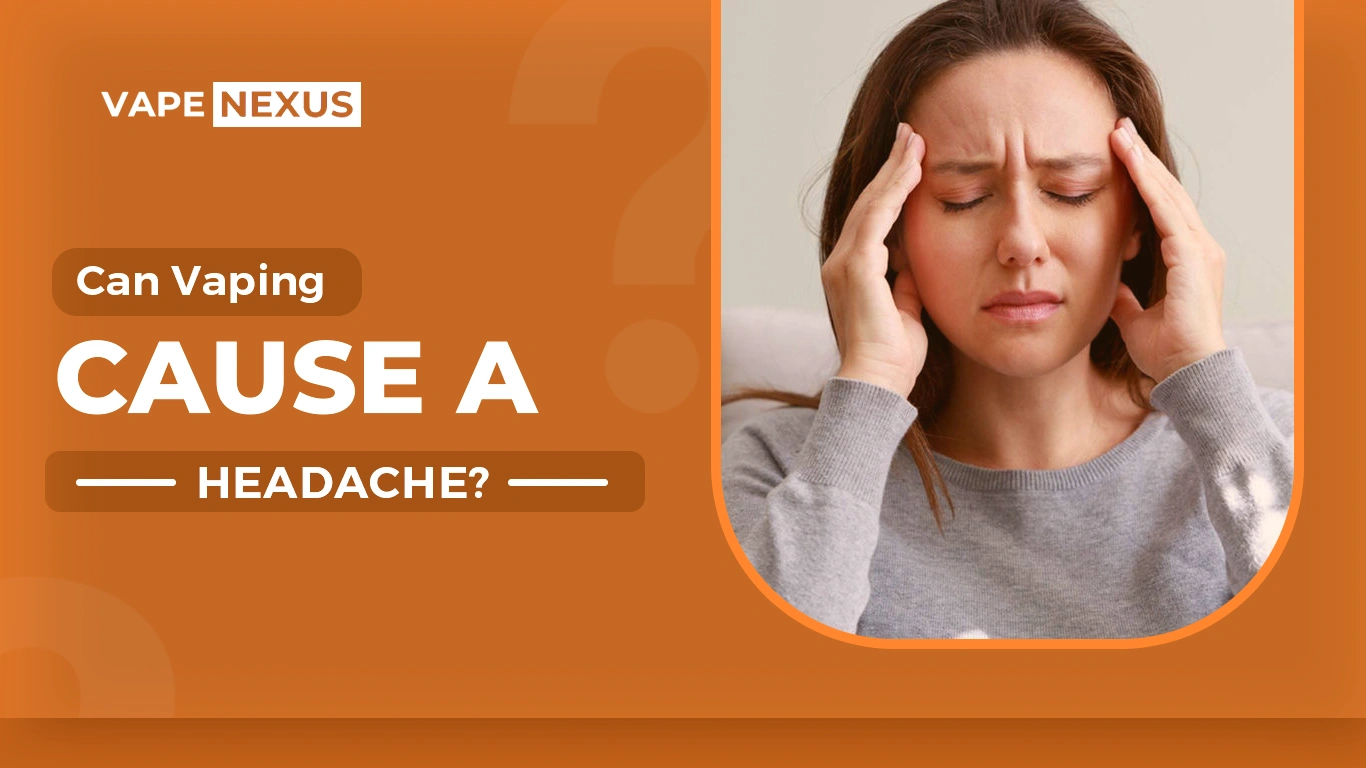Headaches are one of the most commonly reported side effects in the vaping community, raising a question many new and experienced users ask: Can vaping cause a headache? To answer this effectively, it’s important to consider not only nicotine but also e-liquid composition, hydration, and user behaviour. In this guide, we’ll break down the reasons behind vaping-related headaches, how to prevent them, and when to seek alternatives.
Why Some Vapers Experience Headaches
Vaping introduces nicotine, propylene glycol (PG), vegetable glycerin (VG), and flavourings into the body. While these ingredients are generally well tolerated, several factors can trigger discomfort.
- Nicotine absorption: Higher strengths or frequent sessions can overstimulate the body and cause headaches.
- Dehydration: PG can attract moisture, leading to a dry mouth and mild dehydration, which is a known cause of headaches.
- Sensitivity to ingredients: Some users may be sensitive to PG or certain flavour compounds.
- Overuse: Chain-vaping without breaks can overload the system and result in head tension.
Nicotine Strength and Headaches
Choosing the right nicotine strength plays a critical role. Just as too much caffeine can leave you jittery, vaping high-strength nicotine can cause headaches, nausea, or light-headedness. For smokers transitioning to vaping, starting with the correct nicotine level is key. Lowering strength or moderating puff frequency often resolves the issue.
Find the right balance with Nic Salts to enjoy smoother satisfaction without the risk of nicotine-related headaches.
Hydration and Vaping
One of the most overlooked causes of vaping headaches is dehydration. The PG in e-liquids absorbs water, reducing moisture in the throat and mouth. This can quickly contribute to tension headaches if you vape heavily without drinking enough fluids. Keeping a bottle of water nearby when vaping can prevent this entirely.
PG Sensitivity and Headaches
Some vapers discover they are sensitive to PG-heavy e-liquids, experiencing headaches or throat irritation after extended use. Switching to higher-VG blends or experimenting with balanced ratios often reduces these symptoms. Identifying the right PG/VG ratio is a matter of trial and error, but it can significantly improve comfort.
Device Settings and Overuse
Vape devices allow for varying wattages, coil resistances, and airflow adjustments. Using high wattage or restricted airflow can intensify nicotine delivery and heat, both of which may contribute to headaches. Moderating device settings and spacing out sessions can provide immediate relief.
Choose user-friendly Vape Kits with adjustable settings to avoid harsh hits that may trigger headaches.
Flavours and Their Role in Headaches
While most e-liquid flavours are safe, certain strong or artificial flavourings can trigger sensitivity in some individuals. Menthol-heavy or citrus blends, for example, may be more irritating for sensitive users. Rotating flavours and choosing smoother profiles help prevent repeated headaches.
Exploring the Best Vape Juice & Flavour E-liquid Brands can help vapers identify smoother blends and avoid strong flavours that may trigger headaches.
How to Prevent Vaping-Related Headaches
If headaches become a recurring issue, try these practical steps:
- Adjust nicotine strength to match your needs.
- Stay hydrated throughout the day.
- Experiment with PG/VG ratios to find the right balance.
- Take breaks between vaping sessions.
- Monitor which flavours cause discomfort and rotate options.
When to Seek Alternatives
Suppose headaches persist despite adjusting nicotine strength, hydration, and e-liquid ratios. In that case, it may be worth consulting a healthcare professional or exploring alternatives such as nicotine pouches or lower-strength e-liquids. For most vapers, small adjustments make a significant difference.
Comparing Vaping to Smoking-Related Headaches
It’s important to note that headaches are not unique to vaping. Traditional smoking often causes stronger and more frequent headaches due to carbon monoxide and other toxins. In comparison, vaping generally reduces the frequency and severity of these symptoms, making it a harm-reduction alternative.
Conclusion
So, can vaping cause a headache? The answer is yes, but usually due to controllable factors such as nicotine strength, dehydration, or sensitivity to ingredients. By adjusting your setup, monitoring e-liquid choices, and staying hydrated, you can reduce the risk significantly. For those moving from smoking to vaping, the benefits often outweigh the occasional discomfort, provided vaping is approached mindfully.
This knowledge empowers vapers to enjoy a smoother and safer experience while making informed choices about their journey.
Discover the right Vape Liquid options to enjoy smoother flavours and reduce the chances of vaping-related headaches.
Frequently Asked Questions (FAQs)
1. Can vaping give you a headache?
Yes, vaping can give you a headache, often due to high nicotine strength, dehydration, or sensitivity to e-liquid ingredients.
2. Why do I get a headache after vaping?
You may get a headache after vaping if you use strong nicotine, vape too frequently, or do not drink enough water.
3. Does nicotine in vape cause headaches?
Yes, nicotine is a stimulant and can trigger headaches when consumed in high amounts or too quickly.
4. Can propylene glycol (PG) in vape juice cause headaches?
Yes, PG can cause headaches in sensitive individuals. Switching to a higher VG e-liquid often reduces this effect.
5. How do I stop headaches from vaping?
You can stop headaches from vaping by lowering nicotine strength, staying hydrated, taking breaks, and adjusting device settings.
6. Do certain vape flavours cause headaches?
Yes, some strong flavours like menthol or citrus may trigger headaches for sensitive users. Rotating flavours may help.
7. Are headaches from vaping dangerous?
Most headaches from vaping are mild and temporary. If headaches persist, consult a healthcare professional.
8. Is vaping less likely to cause headaches than smoking?
Yes, vaping usually causes fewer headaches than smoking because it avoids carbon monoxide and harmful combustion toxins.


